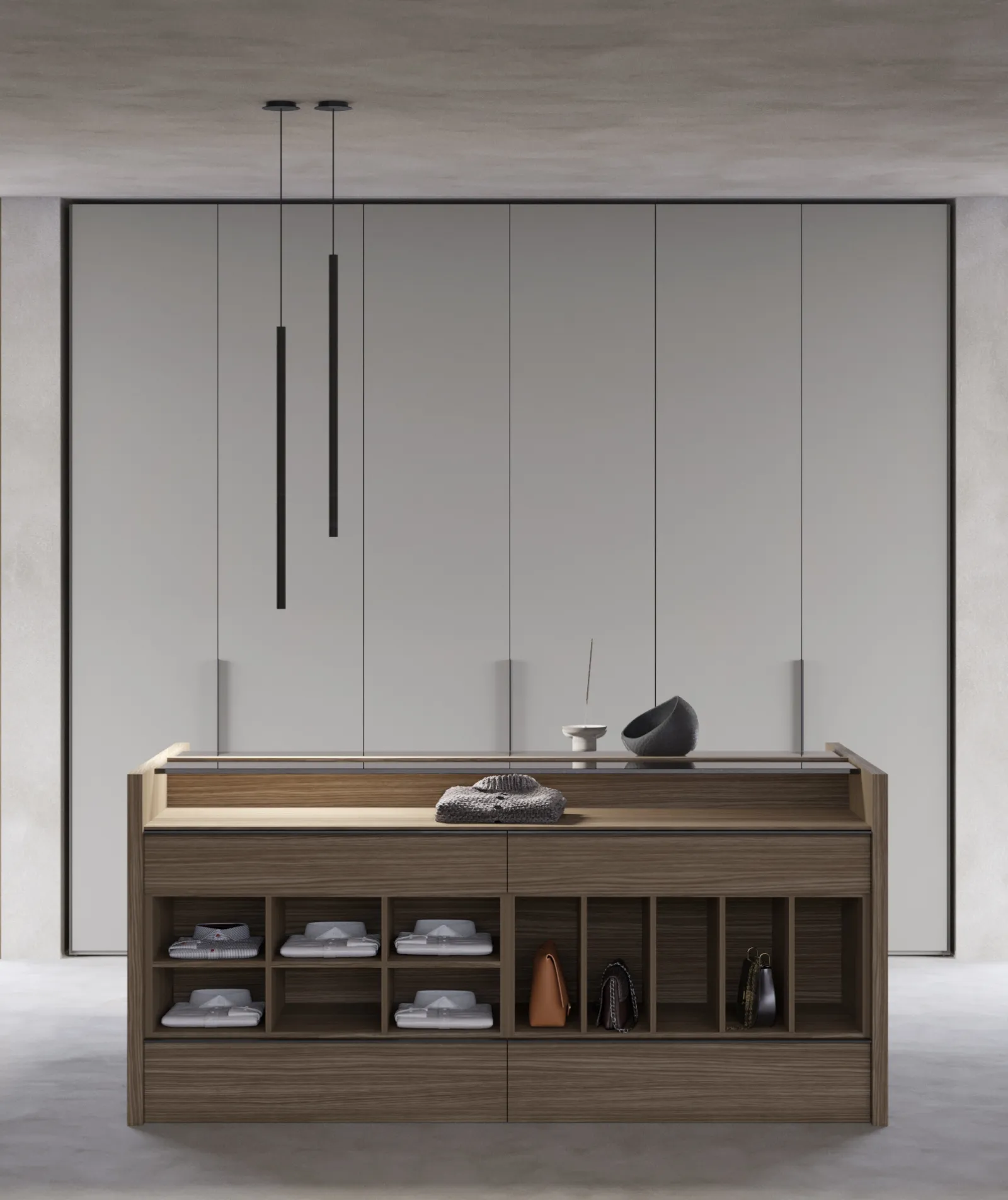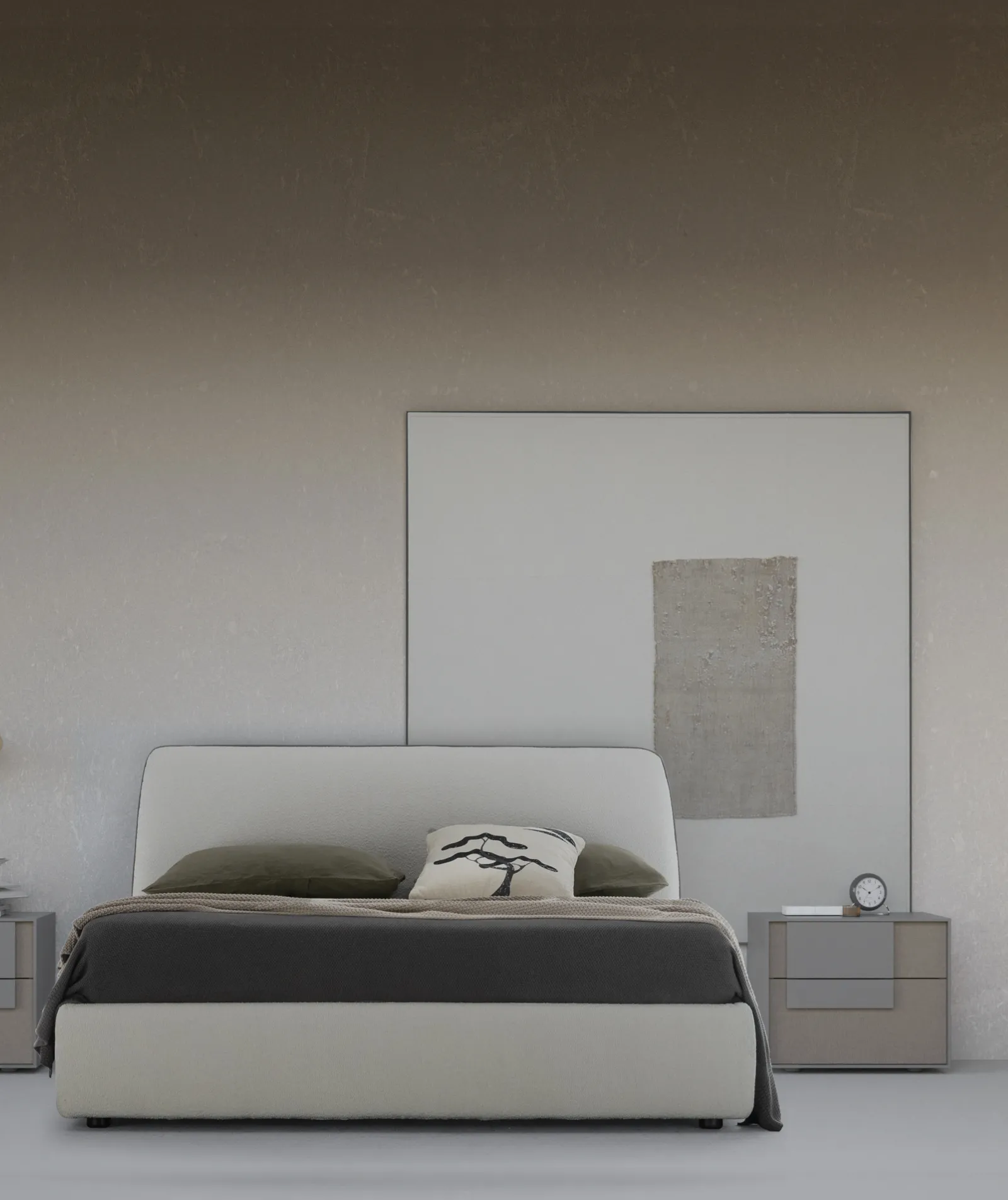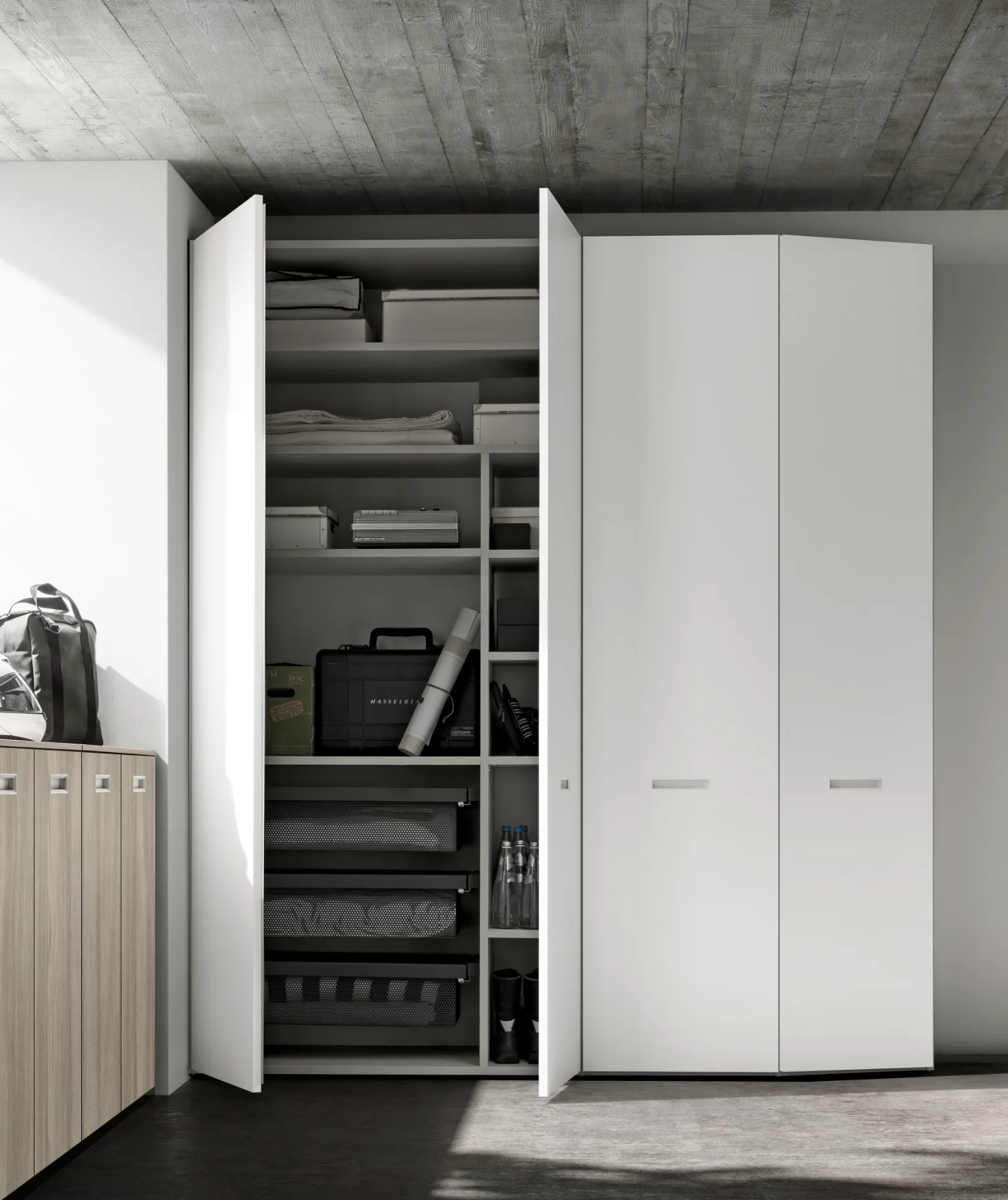Adok, a design oriented approach and environmental sustainability
Standardised design means rationality from the first to the last detail, made tangible through the responsible use of materials with a circular approach. Sustainability also implies adaptability — a concept that, in the world of interior design and furniture, translates into transformability. The brand’s mission is to develop flexible environments and modular products that respond not only to present needs, but also to future living requirements. It is a design philosophy that reflects the company’s commitment to implementing effective corporate sustainability strategies.
Let’s explore how this approach takes shape in practical terms.
Circulation of raw materials
Sustainability also (and above all) means the circular economy. What was once considered a simple waste or disposable waste can now become a resource again. Adok is committed to honouring the virtuous cycle of raw materials deriving from post-consumer wood: in fact, wood from responsibly managed forests is flanked by a high quality recycled wood, used to make melamine-faced chipboard panels which Adok is made from.
And when a piece of furniture has reached the end of its life? Throwing it away is out of the question. In fact, all Adok furniture can be recovered and reused to create new furniture, thereby contributing to the preservation of natural resources.
Healthy home environments
Indoor pollution is a silent killer. We think of the smog outside the window without ever taking into account all the substances that worsen the air quality inside our homes. The culprits of bad indoor air quality are many, and these include formaldehyde and Volatile Organic Compounds that often arise from home furnishings.
In Adok furniture, made using Carb P2 panels (in accordance with US CARB ATCM Phase II /U.S. EPA TSCA Title VI regulations), formaldehyde emission values are below the limits set by European regulations. thereby reducing the impact of indoor exposure and improving air quality.
Furthermore, for the lacquered parts, Adok uses water-based lacquers certified in emission class A+ (this is one of the most important certifications: it indicates the lowest expected level of indoor emissions of harmful substances).
Adok fights pollution both within the home and in its production environments, safeguarding the health of both workers and end users.
Respect for workers
Adok is also a design form of a corporate culture that virtuously combines environmental issues with social and corporate responsibility aspects within the context of sustainability.
First and foremost, respect for workers’ rights, inclusiveness, respect for the environment and social commitment, which are complemented by the company’s adoption of a Code of Ethics (in accordance with Legislative Decree 231 of 2001). It includes not only the company’s rights, duties and responsibilities towards its stakeholders (employees, suppliers, customers, etc.), which, together with the company’s corporate governance policies, also focus on the equality of workers in the protection of vulnerability, social inclusion and health and safety in the workplace.
This is to say that the word “sustainability” includes a multifaceted universe: today the environmental impact cannot be released from the social and economics one.
This is the only way to create a solid company that, on the road to success, rewards its workers without compromising the environment.
This is, after all, the meaning of the title of this article: when sustainability is in the history of people, and people in the history of the world.




